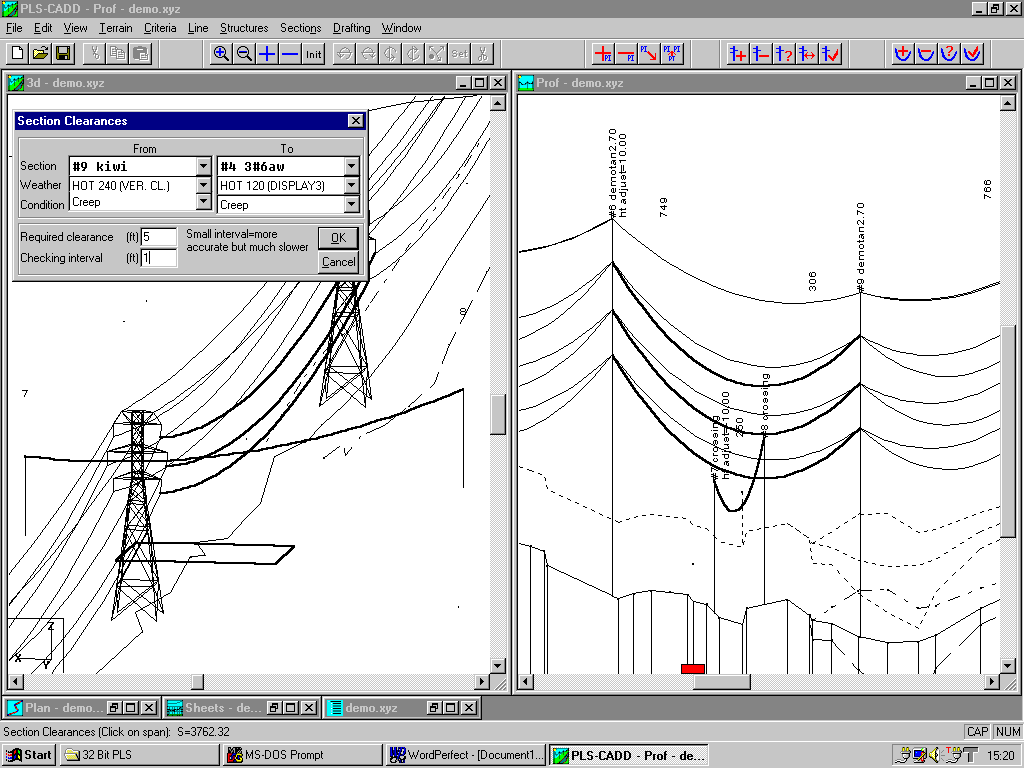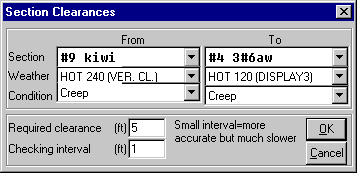
Madison, WI 53705, U.S.A.
Phone: (608) 238-2171, Fax: (608) 238-9241
Email: info@powline.com
| Home | Search | News | Products |

|
610 N. Whitney Way, Suite 160
Madison, WI 53705, U.S.A. Phone: (608) 238-2171, Fax: (608) 238-9241 Email: info@powline.com |
|||
|

Note: The procedure below makes use of program features that were not available prior to PLS-CADD Version 4.65.
Assume the you want to check the clearance between the KIWI circuit in the demo line between original Structure # 6 and Structure #7, under the 'Hot 240' weather case 'after creep' and a crossing wire under a '120 Deg' weather case also 'after creep'.
Steps to follow:
 Locate one dummy structure on each side of the line with its top at the location of the left and right support of the crossing wire. Use 'Structures/Add', click close to the desired station, and type-in the required station, height adjustment and offset adjustment to match the support point. If you have survey points at the structure locations you can use the 'Structures/ Move on' command to snap your structures to the surveyed points.
Locate one dummy structure on each side of the line with its top at the location of the left and right support of the crossing wire. Use 'Structures/Add', click close to the desired station, and type-in the required station, height adjustment and offset adjustment to match the support point. If you have survey points at the structure locations you can use the 'Structures/ Move on' command to snap your structures to the surveyed points. Use the function 'Sections/ Clearances' to check the clearance between the two crossing circuits.
Use the function 'Sections/ Clearances' to check the clearance between the two crossing circuits.
When you are done, you will see the minimum clearance markers. If you want to simultaneously display the KIWI for 'Hot 240' and the crossing wire for '120 Deg', make sure that these display conditions are set for each circuit in the lower part of the 'Section/ Modify' box and that the global display has been turned off (3rd item in 'Sections/Global Display' dialog box is unchecked)
The procedure above can easily be modified to include multiple wires by substituting structures with multiple attachment sets for the structures used above.
You cannot use the above procedure if the crossing line is exactly perpindicular to the original line because the two dummy structures would be at exactly the same station. In this case, you should move one of the structures a foot or so.